ASUS PQ321Q UltraHD Monitor Review: Living with a 31.5-inch 4K Desktop Display
by Chris Heinonen on July 23, 2013 9:01 AM ESTAfter I published the initial grayscale dE2000 results for the PQ321Q, there was a lot of feedback over the quality of the numbers. The simple fact in the end is that only two of the numbers rose above the visual threshold of a dE2000 of 3.0. Yes, I would really like to see an average dE2000 of 1.0 or less, but the point of dE2000 is to tell us if we can see an error or not. With the exception of pure white, and even then just barely, the PQ321Q should look incredibly neutral without any calibration done to the grayscale. The gamma also tracks the 2.2 target very well, which will help to make up for the lack of depth in the black level.
Of course we want to calibrate the PQ321Q to see what it can really do. If you are buying a $3,500 display, you can likely buy, or rent, calibration gear to get it dialed in if you really care about image quality. And if you do, you are in for a treat.
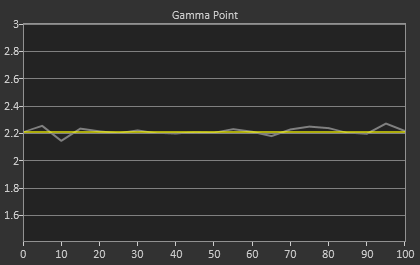
Post-calibration, our dE2000 average is now 0.56. We see every error below 2.0 except for 0, which really doesn’t matter anyway. There is no color shift, and the gamma tracks along 2.2 almost perfectly. Our contrast ratio has taken a small hit, down to 704:1 as it has to manipulate the peak white level to be more accurate. What we see now is a grayscale image that is basically flawless.
With color the PQ321Q has a pair of issues. The first issue is undersaturation in the gamut when it comes to red and blue. This also causes Magenta to be undersaturated, and brings out some high dE values for 100% saturations on those colors. We also see that green and red fall outside the sRGB gamut triangle. This too is unfortunate as it pushes yellows and oranges outside the gamut, and causes errors there. Our Cyan value is almost perfect, but every other color has some issue on the PQ321Q, at least at 100%.


The reason we don’t just stop with the gamut charts is because they only represent 6 colors out of millions. They might have a large error, but it is rare to see 100% saturated colors in real content like photos or movies. To test this we use the Colorchecker chart in CalMAN. We’ve always used the Gretag Macbeth chart, which has 24 common colors on it. SpectraCal has added a 96-sample chart to the newest version of CalMAN. This adds more skin tones and other colors, and will provide a more accurate indication of monitor performance. The color samples for it are taken from an XRite chart. I’m going to run them both for a few reviews to see how it goes, but more samples leads to better accuracy, and lets us pinpoint exactly where things are going bad.
On the PQ321Q the issues all come back to Red/Orange/Yellow shades. Skin tones are good, blues and purples and cyans are all decent, and blue-greens are nice as well. Those tones that fall outside of the triangle cause the dE2000 average to rise way, way up and show us where the issues are. Reds certainly have a good amount of pop on the ASUS, and there really isn’t a good way to bring them back in. This issue is the largest one with the ASUS PQ321Q, as that extra gamut can’t really be addressed.
Traditionally if you look at the standard gamut dE2000 chart and see a large error in red, that indicates you will have issues with skin tones and people looking sunburned, With the larger Color Checker chart, we see that this is not the case, and that skin tones are, for the most part, under control while orange and yellows are not. This extra data helps us realize where the ASUS will look correct and where it will fall short.

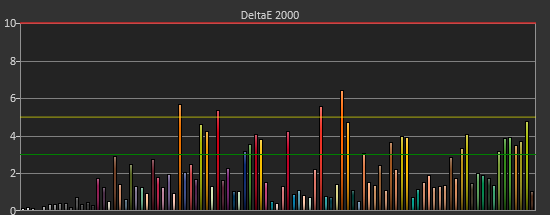
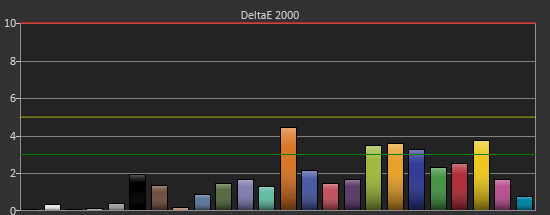
With the saturations charts, we see that the errors start small, like usual, and get larger as you move towards the edge of the gamut. Blue has the largest error, though we are less sensitive to blue than other colors. Cyan again remains great, and it would be nice if every color had the same performance as it does.
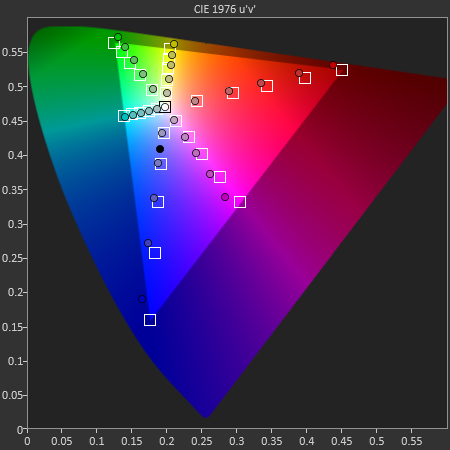
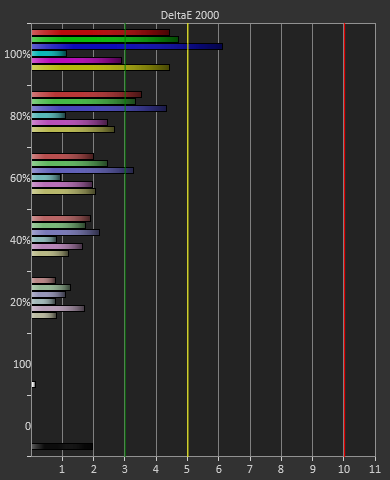
Post-calibration the ASUS is a bit of a mixed bag. We get great grayscale and gamma performance, but most people don’t just deal in black-and-white content. The color gamut provides a bit of an issue being both under-saturated and out-of-gamut at the same time. Looking through images the issue that pops out to me is the yellows. They really pop off the screen and look too bright. The color of reds looks slightly off, but yellow has the biggest issue that I can see with my eyes.


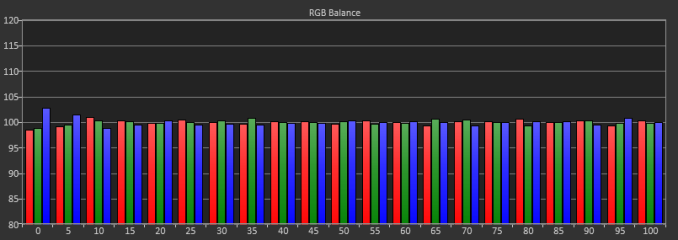
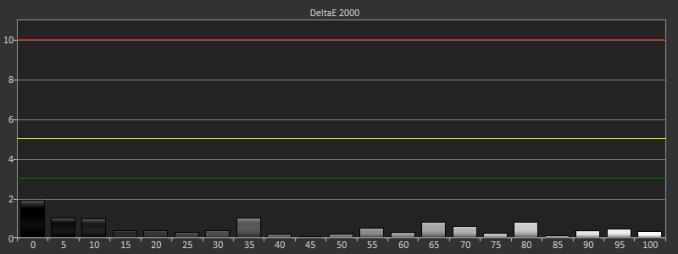











166 Comments
View All Comments
1Angelreloaded - Wednesday, July 24, 2013 - link
Your brain can process more than that from your optical socket.Kamus - Wednesday, July 24, 2013 - link
What a load of crap. You have no clue what you are talking about do you?piroroadkill - Thursday, July 25, 2013 - link
I can 100% tell the difference between 720p and 1080p on my 24" monitor at a reasonable difference.The fuzzy edges and aliasing are a dead giveaway.
Film on the other hand, tends to soften the crap out of edges anyway, and has natural motion blur built in, and at only 23.976 frames per second, tends to give little in the way of real resolution when motion is occurring.
However, games are not film. They are not rendered at a low framerate, and objects and absolutely, perfectly crisp. Rendered geometry. You can easily tell the difference.
SlyNine - Friday, July 26, 2013 - link
Where did you come up with that?? You need to substantiate your comments with some sources and objective tests.I can DEFENETLY tell the difference between 720 and 1080 on SOME moving content. Even if it is not as noticeable.
mdrejhon - Wednesday, July 31, 2013 - link
Integr8d, that's only because the display has motion blur. On a CRT, motion clarity is the same during stationary motion and fast motion (this is known as the "CRT effect"). You get that on LightBoost LCD's too as well. So fast-panning motion of a constant speed (e.g. horizontally strafing left/right while you track eyes on moving objects), the panning image is as clear as stationary image. This is the "CRT effect", and you don't get that on most TV's except for certain modes like Sony's new low-latency interpolation-free "Motionflow IMPULSE" mode (Game Mode compatible) found in some TV's such as KDL55-W802A -- it's essentially Sony's version of LightBoost.1Angelreloaded - Wednesday, July 24, 2013 - link
Your statement would be fine if we came from the same mold, but we don't people vary and the capabilities of their bodies also vary, kind of why certain army personel are chosen to become snipers.random2 - Friday, July 26, 2013 - link
People need to look a the the recommended viewing distances on HD TV's. Most people sit way too far away to take advantage of HD content. Distances are recommended between 5.5 ft to 6.5 feet for 42" to 50" TVs. The whole idea being to move close enough to replicate the feel of a large movie screen.Impulses - Wednesday, July 24, 2013 - link
Audiophiles are just terrible at objective testing, but the differences between a $500 stereo and a $2K one are definitely measurable and not terribly hard to pin down... They're also not very large in many cases (audiophiles are also amongst the worst hobbyists when it comes to paying for diminishing returns).1Angelreloaded - Wednesday, July 24, 2013 - link
Huh? you could have fooled me vintage stereo equipment goes for thousands over the original retail. Cars have the worst diminishing return of any other hobby that exists btw.cremefilled - Wednesday, July 24, 2013 - link
"Diminishing returns" != "depreciation." He's saying that if speakers that cost $500 would rate 90/100, and $5,000 would rate 95/100, and $50,000 98/100, audiophiles would spend the $50,000 or more if they had the money, even though each 10-fold price increase gets you a smaller increment of quality. Average people would say that they all sound pretty good.